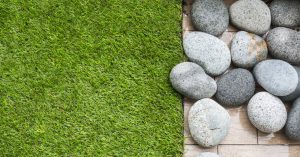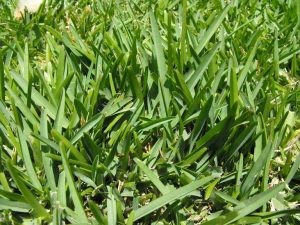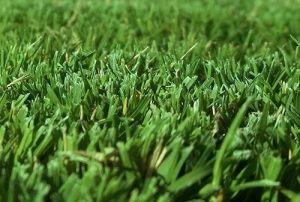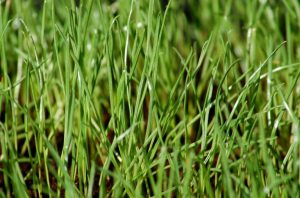Types of Grass: Which is Best for your Lawn?

When it comes to designing our gardens, it’s very important to think about the different types of grass you can buy for your lawn. They’re not all the same, and their different characteristics mean that they suit some soils and climates better than others.
A good garden is characterized by a beautiful, healthy and well-kept lawn, so it’s important to think about the different characteristics of the grass you choose, as well as the type of soil it’ll be growing in.
For example, you need to consider the amount of light, its maintenance, and what you’ll be using it for.
In today’s article, we’ll tell you about different types of grasses and give you some advice to help you choose the right one for your lawn.
Types of grass
Grass is one of the most common plants to find in our gardens. Thanks to the huge variety, you can find grasses for all different soil types, uses, and climates. There are three main grass types:
Lawn grasses
These grasses are some of the hardiest in existence. They can adapt to any climate and don’t require much maintenance.
Ornamental grasses
Thanks to their great aesthetic, we often use ornamental grasses for our lawns. They require more regular and specific care. They’re delicate, but also very decorative.
Sports turf
These grasses are very hard-wearing and can withstand constant use and high traffic. They’re commonly used for sports fields.
Sub-types of grass
The following types of grass are the most commonly used for lawns. Each one can be classified under one of the three categories we just discussed.
St Augustine grass: ornamental
Also known as buffalo grass, this is perennial, and is best suited to warm climates. It has broad blades that form a medium density lawn.
Plus, it’s tolerant to the sun – although not in excessive amounts – and is fairly slow growing. However, it can’t withstand heavy use or high-traffic.

Carpet grass: sports turf
Of all the different types of grasses, this is one of the hardiest species. It’s perfect for warmer climates. It’s classified as a creeping grass and forms a dense carpet which prevents weeds from growing.
However, it requires plenty of water. The advantage is that it can grow in the sun as well as in the shade. It grows best in sandy soil.
Bermuda grass: lawn
Bermuda grass is characterized by its dark green color which makes it instantly distinguishable from other types of grass. However, in winter, it loses its color, which is why we’d recommend that you resow it in the fall.
It can adapt to all soil types and can withstand high traffic reasonably well. Finally, this type of grass is resistant to insects and diseases. It’s the type you’re most likely to see in gardens and public parks.
If you take good care of it, it can be a really beautiful, high-quality lawn.

Dichondra: ornamental
This type of lawn is perennial and is best suited to dark, humid environments, although it does also have reasonably good tolerance to light. It’s fragile, and will not withstand being walked on. It doesn’t grow much and will require plenty of water if you want it to form a “carpet”.
Rye grass: sports turf
This is perhaps one of the most well-known and commonly used species in the gardening world. It requires an average amount of water and will tolerate high temperatures and exposure to sunlight.
However, it requires constant and very particular maintenance, as it is very susceptible to weeds.
Another perennial species, it is instantly recognizable by its very intense green color. Plus, it looks great all year round and can withstand high traffic.

Which is the best grass for me?
When it comes to choosing the best grass for your lawn, we recommend that you spend some time researching the different grass types that are available.
You should also consult professionals and get their expert advice. However, we didn’t want to end this article without giving you some things to keep in mind when choosing the perfect grass for your lawn.
Firstly, you should think about what kind of environment your grass will be growing in. Not all grasses are able to withstand very high or very low temperatures. Make sure that the grass you choose is compatible with the environment.
Secondly, it’s essential to work out what type of soil you have.
It’s also important to think about how much water will be available. Remember that some types of grass require more water than others, so you need to know exactly how much yours will need in advance.
The maintenance your lawn will require is another important aspect, as it will depend on how much time you have to dedicate to your garden.
If you don’t have much spare time, you should choose a low-maintenance lawn.
You should also be aware of how much sun and shade your garden gets. It’s essential to know which direction your garden faces, and where the sun rises and sets in relation to your lawn. That way, you’ll know whether your garden spends more time in the sun or the shade.
There are two final, but fundamental aspects: what you’ll be using your garden for and how much it will cost.
Conclusion
If you have children, you like to practice sport or you enjoy throwing parties and spending time with friends in your garden, then you need to choose a lawn that will withstand regular use.
The cost is also an important aspect which will influence the quality of your lawn. You should always try to strike a balance between quality and price.
If you can keep all these aspects in mind and get some expert advice, you’re sure to make the right choice when it comes to choosing the grass for your lawn.
When it comes to designing our gardens, it’s very important to think about the different types of grass you can buy for your lawn. They’re not all the same, and their different characteristics mean that they suit some soils and climates better than others.
A good garden is characterized by a beautiful, healthy and well-kept lawn, so it’s important to think about the different characteristics of the grass you choose, as well as the type of soil it’ll be growing in.
For example, you need to consider the amount of light, its maintenance, and what you’ll be using it for.
In today’s article, we’ll tell you about different types of grasses and give you some advice to help you choose the right one for your lawn.
Types of grass
Grass is one of the most common plants to find in our gardens. Thanks to the huge variety, you can find grasses for all different soil types, uses, and climates. There are three main grass types:
Lawn grasses
These grasses are some of the hardiest in existence. They can adapt to any climate and don’t require much maintenance.
Ornamental grasses
Thanks to their great aesthetic, we often use ornamental grasses for our lawns. They require more regular and specific care. They’re delicate, but also very decorative.
Sports turf
These grasses are very hard-wearing and can withstand constant use and high traffic. They’re commonly used for sports fields.
Sub-types of grass
The following types of grass are the most commonly used for lawns. Each one can be classified under one of the three categories we just discussed.
St Augustine grass: ornamental
Also known as buffalo grass, this is perennial, and is best suited to warm climates. It has broad blades that form a medium density lawn.
Plus, it’s tolerant to the sun – although not in excessive amounts – and is fairly slow growing. However, it can’t withstand heavy use or high-traffic.

Carpet grass: sports turf
Of all the different types of grasses, this is one of the hardiest species. It’s perfect for warmer climates. It’s classified as a creeping grass and forms a dense carpet which prevents weeds from growing.
However, it requires plenty of water. The advantage is that it can grow in the sun as well as in the shade. It grows best in sandy soil.
Bermuda grass: lawn
Bermuda grass is characterized by its dark green color which makes it instantly distinguishable from other types of grass. However, in winter, it loses its color, which is why we’d recommend that you resow it in the fall.
It can adapt to all soil types and can withstand high traffic reasonably well. Finally, this type of grass is resistant to insects and diseases. It’s the type you’re most likely to see in gardens and public parks.
If you take good care of it, it can be a really beautiful, high-quality lawn.

Dichondra: ornamental
This type of lawn is perennial and is best suited to dark, humid environments, although it does also have reasonably good tolerance to light. It’s fragile, and will not withstand being walked on. It doesn’t grow much and will require plenty of water if you want it to form a “carpet”.
Rye grass: sports turf
This is perhaps one of the most well-known and commonly used species in the gardening world. It requires an average amount of water and will tolerate high temperatures and exposure to sunlight.
However, it requires constant and very particular maintenance, as it is very susceptible to weeds.
Another perennial species, it is instantly recognizable by its very intense green color. Plus, it looks great all year round and can withstand high traffic.

Which is the best grass for me?
When it comes to choosing the best grass for your lawn, we recommend that you spend some time researching the different grass types that are available.
You should also consult professionals and get their expert advice. However, we didn’t want to end this article without giving you some things to keep in mind when choosing the perfect grass for your lawn.
Firstly, you should think about what kind of environment your grass will be growing in. Not all grasses are able to withstand very high or very low temperatures. Make sure that the grass you choose is compatible with the environment.
Secondly, it’s essential to work out what type of soil you have.
It’s also important to think about how much water will be available. Remember that some types of grass require more water than others, so you need to know exactly how much yours will need in advance.
The maintenance your lawn will require is another important aspect, as it will depend on how much time you have to dedicate to your garden.
If you don’t have much spare time, you should choose a low-maintenance lawn.
You should also be aware of how much sun and shade your garden gets. It’s essential to know which direction your garden faces, and where the sun rises and sets in relation to your lawn. That way, you’ll know whether your garden spends more time in the sun or the shade.
There are two final, but fundamental aspects: what you’ll be using your garden for and how much it will cost.
Conclusion
If you have children, you like to practice sport or you enjoy throwing parties and spending time with friends in your garden, then you need to choose a lawn that will withstand regular use.
The cost is also an important aspect which will influence the quality of your lawn. You should always try to strike a balance between quality and price.
If you can keep all these aspects in mind and get some expert advice, you’re sure to make the right choice when it comes to choosing the grass for your lawn.







